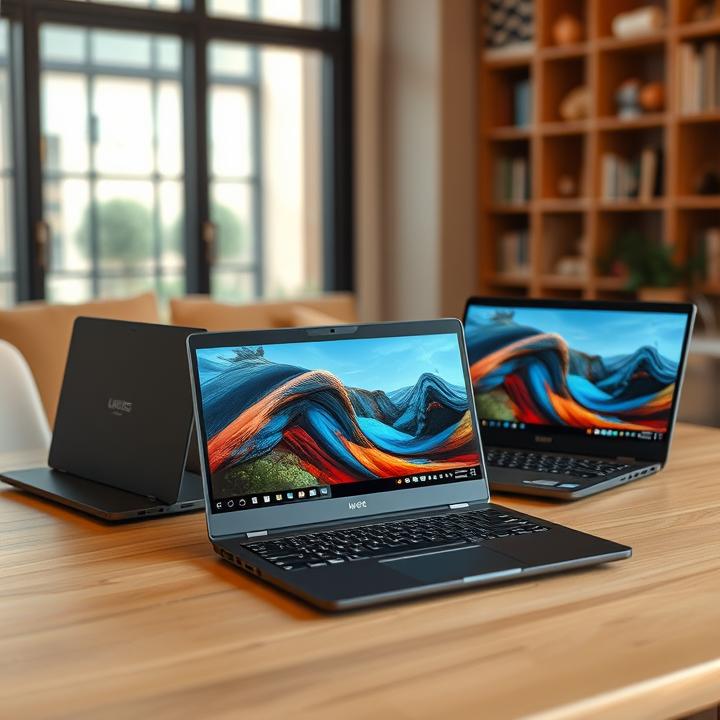5G Technology in Enhancing PC Connectivity and Performance

An extensive analysis of how 5G technology is revolutionizing PC connectivity, offering ultra-fast speeds, low latency, and enhanced capabilities for mobile computing, gaming, and remote work.
4.1 What Sets 5G Apart from Previous Generations of Connectivity?
5G technology offers speeds up to 100 times faster than 4G, with latency as low as 1 millisecond, and the ability to support millions of devices per square kilometer. This makes it ideal for applications that require real-time responsiveness, such as gaming, remote work, and streaming high-definition content.
4.2 How 5G is Changing the PC Landscape
- Mobile Computing Unleashed: With 5G-enabled laptops, users can experience high-speed internet connectivity without relying on Wi-Fi networks. This makes remote work, video conferencing, and cloud computing more seamless than ever before. Employees can download large files, participate in video meetings, and collaborate on cloud-based projects without experiencing lag, even in rural or remote locations.
- Enhanced Cloud Gaming and Streaming: The ultra-low latency provided by 5G is a game-changer for cloud gaming platforms like NVIDIA GeForce Now and Google Stadia. PCs connected to 5G networks can stream high-quality, latency-free gaming experiences, making it possible for users to enjoy demanding titles without requiring powerful hardware. For example, gamers using 5G-enabled PCs can stream AAA games in 4K resolution with minimal lag, even on the go.
4.3 Real-World Applications of 5G in PCs
- The Lenovo Yoga 5G: As one of the first 5G-enabled laptops, the Lenovo Yoga 5G has set the benchmark for high-speed, mobile computing. Users can experience download speeds of up to 4 Gbps, making it ideal for professionals who need to work from various locations without compromising connectivity. The device’s ability to switch seamlessly between 4G and 5G networks ensures uninterrupted productivity.
- Dell Latitude 9510 5G Integration: Dell’s Latitude 9510 has embraced 5G technology to provide business professionals with ultra-fast connectivity, allowing them to participate in video conferences, access cloud-based applications, and collaborate with team members in real-time. The device’s AI-enhanced battery management ensures longer usage, even when running on 5G, addressing one of the primary concerns of battery drain associated with high-speed networks.
4.4 The Impact of 5G on Industries and the PC Market
- Education Sector: 5G technology is transforming the education sector, enabling remote learning through real-time video streaming, virtual classrooms, and collaborative projects. Students and educators using 5G-enabled PCs can participate in immersive learning experiences, such as VR-based lessons and interactive simulations, without connectivity issues.
- Healthcare and Telemedicine: In healthcare, 5G technology enables telemedicine applications where doctors can conduct virtual consultations, access medical records, and even guide remote surgeries using 5G-enabled PCs. This has proven invaluable during the pandemic, as it allows healthcare providers to offer remote care while minimizing patient exposure.
4.5 The Future of 5G and PCs: A Connected World
- AR and VR Integration (Augmented and Virtual Reality): The ultra-low latency of 5G makes it possible to fully integrate augmented reality (AR) and virtual reality (VR) applications into PCs. This will open up new possibilities in gaming, training, and education, allowing users to experience highly interactive, immersive environments.
- IoT Expansion and Smart Homes: 5G-enabled PCs will serve as the central hub for smart home devices, allowing users to control everything from lighting to security systems seamlessly. The high bandwidth and low latency of 5G will enable PCs to handle real-time data from multiple IoT devices, providing a more efficient and responsive smart home experience.
- Increased Cloud Dependency: As 5G becomes more widespread, PCs will rely more on cloud computing, reducing the need for high-capacity internal storage. This shift will result in slimmer, lighter PCs designed primarily for cloud-based applications, offering users flexibility and access to vast storage and computing resources.
4.6 Challenges and Considerations for 5G in PCs
- Battery Drain Concerns: One of the primary challenges of 5G-enabled PCs is managing battery life, as 5G connectivity can drain power more quickly than 4G. Manufacturers are developing more energy-efficient chips and batteries to address this issue.
- Infrastructure Limitations: While 5G offers remarkable benefits, its adoption is still limited by infrastructure availability. It may take several years before 5G coverage is widespread enough to make 5G-enabled PCs practical for all users, especially in rural or underserved areas.
4.7 Investment Outlook and Market Growth for 5G PCs
Projected Market Growth: Industry analysts predict that the market for 5G-enabled PCs will grow exponentially, reaching over 50 million units by 2028. Investors are closely watching companies that are early adopters of 5G technology, such as Lenovo, Dell, and HP, as they are likely to benefit from this growth.

